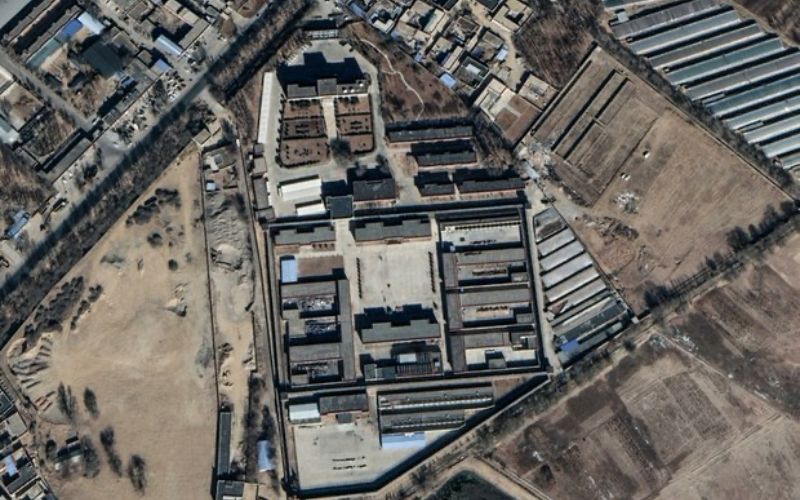
RFA
A new research conducted by the Rand Europe research institute has revealed a troubling trend of increased activity in high-security detention centers in Tibet. This heightened activity was observed using night-time lighting data, indicating a possible surge in harsher imprisonments by Chinese authorities. Tibet's autonomous region is widely known for its secrecy and is referred to as an "information black hole" in the study.
The investigation utilized both satellite imagery analysis and night-time lighting data to understand the situation.
The researchers studied 79 detention facilities in the Tibetan Autonomous Region and discovered that the night-time lighting growth was most significant in 14 higher-security facilities. The analysis revealed an overall increase in night-time lighting in prisons between 2019 and 2020, and in high-security detention facilities between 2021 and 2022. In contrast, lower security facilities experienced a peak in growth in 2017.
Ruth Harris, the Director of Defence and Security at Rand Europe, Tibet remains an information black hole and any attempt to understand the security landscape there is fraught with difficulty. She also highlighted the difficulties faced by foreign researchers who encounter obstacles in accessing Chinese sources and encounter unreliable data.
Researchers explained that the light observed from space in detention facilities could signal different developments. It might indicate new construction, similar to what was found in previous studies on Xinjiang facilities. However, in the case of Tibetan facilities, the increased light is more likely due to the expansion of existing buildings rather than entirely new constructions.
Moreover, the heightened light could also signify greater occupancy or usage of the facilities, without necessarily suggesting any physical expansion.
The researchers suggest that the increased activity in detention facilities in Tibet may indicate a shift towards longer detentions, similar to what has been observed in Xinjiang, where numerous individuals were sent to re-education facilities and high-security detention centers. Tibet, like other border regions such as Xinjiang and Mongolia, has faced long-standing crackdowns on the religious and cultural practices of non-Han ethnic minorities.
Gaining accurate information from within the Tibet Autonomous Region (TAR) is extremely challenging due to stringent controls on travel, communication, and the flow of information.
Tenzin Choekyi, a senior researcher with the UK-based human rights group Tibet Watch, said it was impossible to know what was going on inside detention centres and noted that the pattern of growth in night-time light coincided with the pandemic. The TAR reported just one case of Covid-19 before an outbreak in August 2022, but was subject to the strict and often punitive nationwide “zero Covid” policies.
Tenzin said there had been a steady decline in media coverage of Tibet in the last decade. She said this was in large part due to the lack of information flow, coinciding with travel bans and punishment of pilgrims crossing the border to India, and a pattern of reprisals and increased surveillance against entire communities for acts by individual activists.
She cited one instance of a Tibetan self-immolating in protest in 2015, which did not come to light until 2021. “That is the level of fear of Tibetans inside Tibet about sharing those stories,” she said.
“Because of the information delay and disarray, it’s difficult to tie a coherent narrative together of what’s happening in the TAR.”
Unlike Xinjiang, which has received more international attention and media coverage, Tibet remains relatively under explored and veiled in secrecy. The report underscores that the lack of reliable data from Tibet does not mean there is no repressive control, but rather underscores the necessity for further research and global attention on the region.
Activists and human rights organizations have expressed increasing worry regarding the mistreatment, imprisonment, and abuse faced by Tibetan activists, religious leaders, and intellectuals. Furthermore, there is criticism surrounding the extensive surveillance, compulsory re-education programs, and the forced enrollment of Tibetan children in state-controlled "boarding schools." These measures are aimed at assimilating Tibetans culturally, religiously, and linguistically into the dominant Han society.
Nonetheless, there is significantly less available data from within the Tibet Autonomous Region (TAR) compared to other regions like Xinjiang. Analysts attribute this disparity to the stringent restrictions on travel, communication, and access to information within Tibet. Additionally, the international attention on the government's policies of control and oppression in Tibet has diminished over time.
Edited and collated by Team TRC